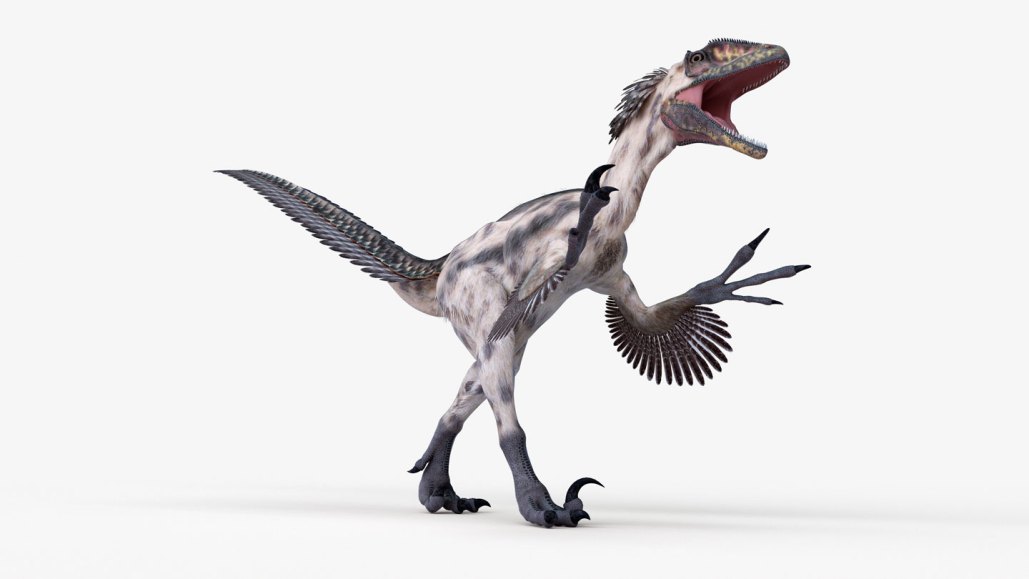"Exploring Dinosaur Behavior: Revealing the Biases in Paleontology"

Uncovering Dinosaur Behavior
David Hone
Princeton Univ., $29.95
In 1971, paleontologists stumbled upon the remains of an 80-million-year-old battle in the sandstones of Mongolia’s Gobi Desert. Dubbed the “Fighting Dinosaurs,” the fossilized scene shows a carnivorous Velociraptor locked in a deadly embrace with an herbivorous Protoceratops. The turkey-sized predator had embedded its famed foot claw into its combatant’s neck. The downed plant eater had chomped onto and broken its attacker’s arm.
For some researchers, the remains all but confirmed that Protoceratops served as regular prey for Velociraptor. Paleontologist David Hone, though, isn’t entirely convinced. The preserved clash may reflect an abnormal situation rather than the typical dining habits of Velociraptor.
In his latest book, Uncovering Dinosaur Behavior: What They Did and How We Know, Hone warns against using individual fossils to make overarching claims about how dinosaurs behaved. “Specimens are, of course, single data points,” he writes, and should not be used to infer too much about a species.
The book starts strong with a straightforward and cautious introduction to dinosaur biology and behavior, and how biases affect our understanding of them. Hone forgoes the touches of personal narrative that make other dino digests by contemporaries Steve Brusatte and Michael J. Benton so accessible. Instead, Hone thrusts readers into a rigorous overview of the latest research, most of which he tempers with disclaimers. Such reality checks would sour most reads. But Hone’s frankness is welcome in a post-Jurassic Park world, where misconceptions continue to capture the public’s imagination.
Some of the biases that shape our perception of dinosaurs come from paleontologists themselves. “New or rare species are more likely to be collected and described than well-known ones,” Hone writes. Paleontologists also tend to collect and publish more on specimens related to the rise of birds or those with unique features, leaving other dinosaur groups understudied.
But some misconceptions are born long before a fossil even forms. Floods and rivers can carry carcasses miles away from where an animal died, misrepresenting where that species lived. Scavengers might take their meal to go, displacing, damaging or preventing an animal’s body from being buried. Acids and bacteria in rainforest soil often decompose corpses before they can be preserved, leading to gaps in the fossil record. “A [body] fossil only represents a moment in time,” Hone writes. “It ultimately represents the moment that an animal was buried, and not usually when it died.”
Certain behaviors are also better preserved than others. Take foraging. Teeth marks on the intact arm bone of a duck-billed dinosaur suggest that Tyrannosaurus rex probably stripped meat from the bone rather than chomping straight through. Tooth wear can help reveal whether sauropods such as Diplodocus preferred snacking on tall trees or low-lying foliage.
But the chances of a dinosaur being buried and, in turn, fossilized during a brief act such as mating are slim to none. This is where scientists can turn to creative tactics, such as inferring behavior from the last surviving dinosaurs — birds — and their closest relatives, crocodilians. For example, in 2021, scientists used an exceptionally preserved specimen of the herbivore Psittacosaurus to three-dimensionally reconstruct the dinosaur’s cloaca. Like today’s birds and reptiles, dinos used this all-purpose orifice to urinate, defecate and reproduce. The study revealed the cloaca had swellings that may have been similar to the musk glands of today’s crocs, suggesting scent may have been one way Psittacosaurus communicated.
Hone ends most chapters with case studies on some of the most misrepresented dinosaurs to date. Enter the predator Deinonychus, the inspiration for the cunning Velociraptor dinos of Michael Crichton’s book Jurassic Park (though Deinonychus itself is not a Velociraptor). In the 1960s, scientists unearthed four partial Deinonychus skeletons surrounding a single unlucky herbivore known as Tenontosaurus.
Researchers used this finding to propose that Deinonychus and most of its dromaeosaur relatives hunted cooperatively. This idea “has sunk into public consciousness,” becoming a common trope in popular media, Hone writes. But evidence for such pack hunting in Deinonychus is “extremely limited,” he notes. For one, it’s possible the Tenontosaurus had been scavenged rather than killed. What’s more, most Tenontosaurus skeletons found near Deinonychus at other sites were half-grown, a more manageable snack for a lone predator. And some research suggests that this famous crime scene depicts multiple Deinonychus fighting over the carcass, not a coordinated attack.
Despite the thoroughness of Uncovering Dinosaur Behavior in presenting the latest research, many important discoveries don't pass through Hone's meticulous evaluation. Hone's careful approach and attention to detail may prevent readers from gaining a deep understanding of how these famous creatures actually lived. This deliberate method serves a purpose, offering readers insights into overcoming biases from an expert's perspective, which can be quite valuable.
With a watchful and authoritative voice, Hone warns against the hasty and impulsive tendencies within paleontology. He points out, "Much of the scientific literature tends to have a level of confidence in interpreting dinosaur behaviors that may not be justified." He emphasizes the importance of acknowledging alternative explanations and the inherent uncertainties in interpreting ancient behaviors, stating that failing to do so hinders progress in the field.
Sponsor Message
Buy Uncovering Dinosaur Behavior from Bookshop.org. Science News is a Bookshop.org affiliate and will earn a commission on purchases made from links in this article.




